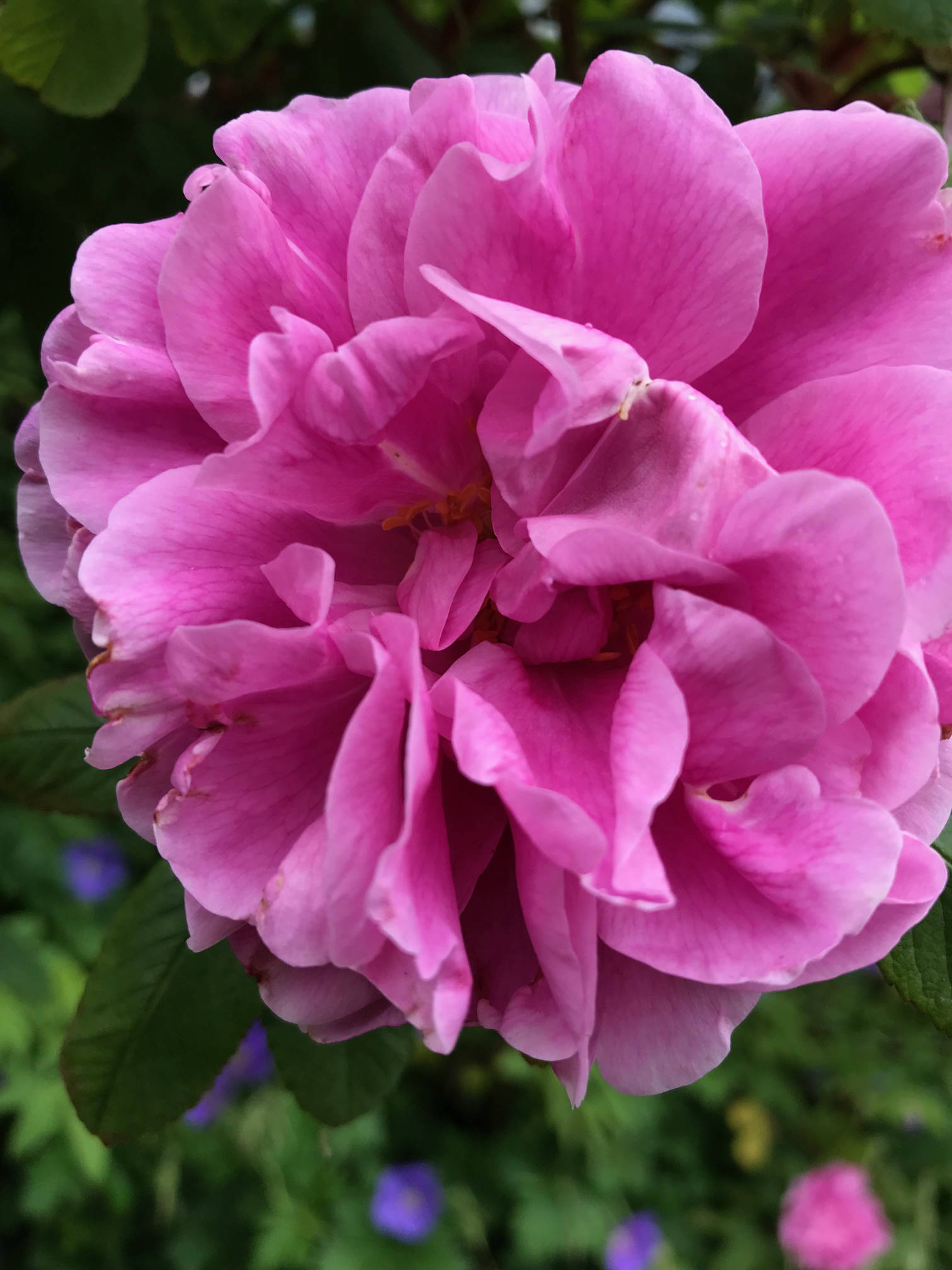I’ve been hearing a lot of dissatisfaction with spinach performance. There are those of you who are dismayed that your spinach is going to seed. Why shouldn’t it? The beauty of this wondrous leafy green is its earliness, its vibrancy, its brief appearance just exactly when we need it. Accept the beauty of this first flush with gratitude and then move on to chard. It’s as easy as that.
There are two kinds of broccoli out here in this vegetable plot. Tried and true Packman and then there is Arcadia. Oh my, Arcadia. The heads on these beauties are huge, 10 inches at the moment with no sign of going to bloom. Both of these varieties have excellent side shoot development, but that comes after the main head is harvested. We are feasting on broccoli, and really, what can beat fresh broccoli? Well, just about any fresh vegetable right out of your very own plot.
What spinach we didn’t eat fresh, and believe me, we ate a lot of fresh spinach, is now tucked into the freezer waiting to nourish us in the dark days ahead. This will be the fate of all the vegetables that don’t get consumed fresh. This is how I plan the garden. I want this bounty in the freezer. Food that we have grown, knowing exactly where it has come from and processed at peak perfection. I don’t know why more of you don’t do this.
The strawberries are having an excellent year. We have eaten a few but once they come on it will be delightful indeed. The raspberries have set fruit and will be loaded. The black currants that I now have four of are still too young to make a strong show. But once they hit their peak we’ll have three kinds of berries out here and I think that is just beyond excellent.
None of the alliums are looking good. I think they really hated that stretch of cold with wind that went on too long this spring. I didn’t offer them enough protection and what little I did, I didn’t do for long enough. In short — I failed my onions/leeks/shallots. Shame on me.
I think I’ve found a solution for my tumbling columbine. I was trimming the red twigged dogwoods of dead wood and saved the cuttings that were multi branched. I stuck a couple around the columbine and, lo, they are holding them up quite successfully and are very unobtrusive to boot. My overall plan is to have the perennial beds planted dense enough that plants hold each other up. But this has yet to prove successful.
The veronica is another culprit. Although I love their intense blue color, they tend to flop sooner rather than later. The dogwood branches have come to the rescue. I’m finding more success with the growing habit of salvia although it blooms later than the veronica so it looks like I’ll be tending both of them forever. The salvia has an upright habit with stiff branches and lovely colors. I think there are three or possibly four different salvias out there. Someday I’ll keep track of all this but I do like the surprise.
The lilacs have been having a most excellent season but I have to say the “Miss Kim” is taking center stage here. It is completely covered in blooms (and comes on later than the Canadian explorer series and the common lilac) and underplanted with achillia mollis. It is quite the show. If you don’t have one of these treasures consider it. It is not too late to plant trees and shrubs. Go shopping. Now.
The dwarf Korean lilacs are also in full bloom. These are about three feet tall and four feet wide. There are three of them in the West garden filling in under an ornamental crabapple and a mountain ash. Lovely.
One of the many pleasures of gardening are the birds. While deadheading the blue poppies I noticed a new voice in the bird chorus. The first day I didn’t see anything different but on the second, wow, there were at least 50 crossbills devouring the cones on both of the larch trees. They would move as a flock from one tree to the next and back again. Once they found us they stayed for three days and now have thinned out to a handful. It was quite the experience.
We are on the Kachemak Bay Birders email list and there are those who are bemoaning a dearth of swallows. Not us. They are everywhere including one of the nest boxes here and at our next door neighbor’s. Those little swallows can make quite the racket when hungry and the parents are kept on the fly to feed them. Excellent.
On Friday the 13th we had our first hummingbird sighting. A pair of rufous were working the lilacs and resting in the “Shubert” (this is the tree whose leaves turn maroon in early summer), then on the railing of the deck. Delightful. Whoever said that these little dandies go to red flowers are misinformed, they seem to go to any color that will offer them food. We don’t have a hummingbird feeder, just the garden and they certainly seem to take full advantage of it.
Rosemary Fitzpatrick is a longtime Homer gardener and has been writing Kachemak Gardener since 1990.


